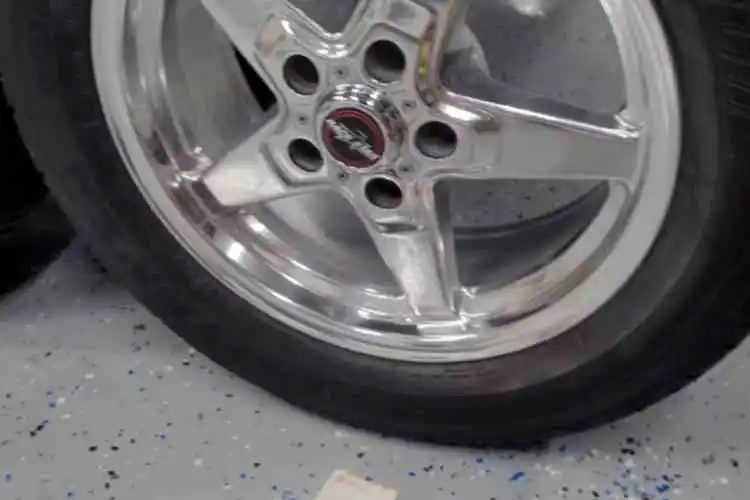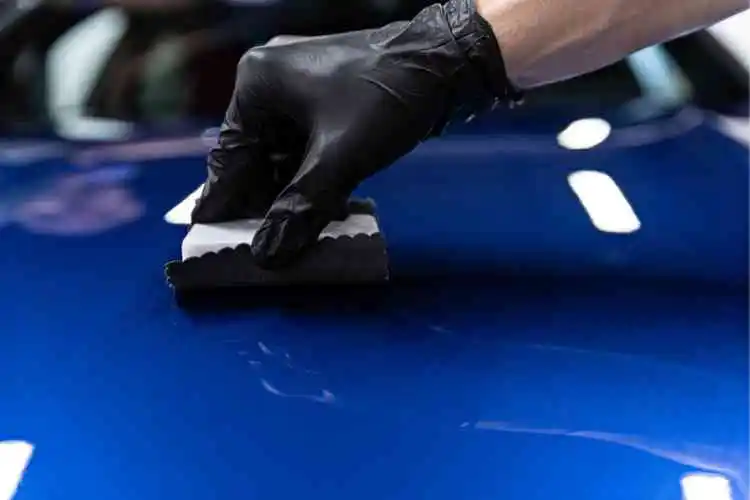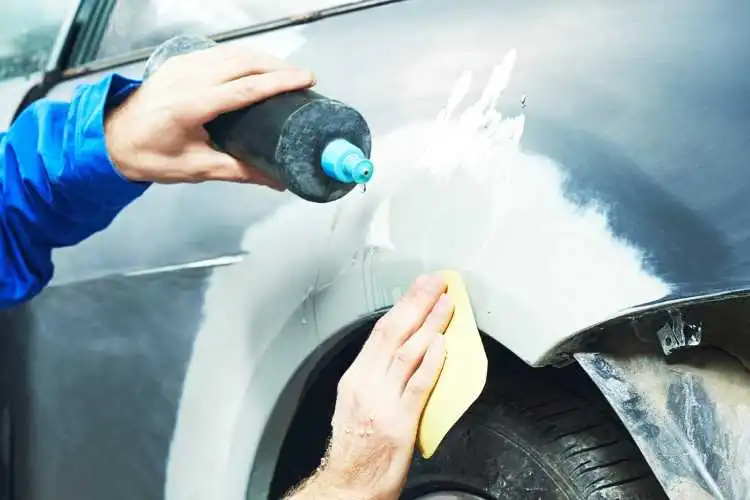Do You Put Loctite On Flywheel Bolts?
Flywheel bolts are an essential component of your car’s engine. They are responsible for keeping the flywheel in place and transmitting power from the engine to the transmission.
Due to the importance of the flywheel bolts, it is important to ensure that they are secured properly. One common question that many car enthusiasts ask is, “Do you put Loctite on flywheel bolts?”
Loctite is commonly applied to flywheel bolts. This prevents loosening caused by vibrations. Clean, apply Loctite, insert bolts, and tighten as instructed. This practice ensures secure attachment while allowing future disassembly.
In this article, we will explore the benefits of using Loctite on flywheel bolts and provide you with a comprehensive guide on how to use it.
What is Loctite?
Loctite is a brand of adhesives and sealants that are commonly used in the automotive industry.
Loctite is designed to provide a strong and durable bond between two surfaces.
It comes in various forms, such as liquids, gels, and pastes, and is designed to work with different types of materials, including metal, plastic, and rubber.
Do You Put Loctite On Flywheel Bolts?
Applying Loctite to flywheel bolts is a common practice in automotive and mechanical applications. Flywheel bolts secure the flywheel to the engine’s crankshaft, ensuring efficient power transfer and smooth engine operation.
To prevent these critical bolts from loosening due to vibrations and torque, a controlled amount of medium-strength or high-strength Loctite can be applied to their threads before installation.
First, clean the bolt threads and the holes in the flywheel thoroughly to remove any oil, debris, or residue. Then, apply a small amount of Loctite to the bolt threads, ensuring not to over-apply.
Excess adhesive could lead to interference during tightening. After applying Loctite, insert the bolts into their designated holes and torque them to the manufacturer’s specifications using a torque wrench.
The Loctite adhesive creates a reliable bond that resists vibration-induced loosening while allowing for eventual disassembly when necessary.
This practice is particularly crucial in high-performance applications, where flywheel movement could impact engine performance and reliability.
Always consult the specific Loctite product guidelines and the vehicle manufacturer’s recommendations for proper application.
Benefits of Using Loctite on Flywheel Bolts:
1. Prevents Bolts from Loosening:
One of the main benefits of using Loctite on flywheel bolts is that it prevents the bolts from loosening.
Over time, the vibrations and heat generated by the engine can cause the bolts to loosen, which can result in serious damage to the engine.
Loctite creates a strong bond between the bolts and the flywheel, preventing them from coming loose.
2. Increases the Torque Rating:
Another benefit of using Loctite on flywheel bolts is that it increases the torque rating. The torque rating is the maximum amount of torque that the bolts can handle before they break.
By using Loctite, you can increase the torque rating of the bolts, making them more durable and reliable.
3. Reduces the Risk of Failure:
Using Loctite on flywheel bolts also reduces the risk of failure. If the bolts come loose, it can cause the flywheel to slip, resulting in a loss of power to the wheels.
This can be dangerous, especially if you are driving at high speeds. By using Loctite, you can ensure that the bolts are securely fastened, reducing the risk of failure.
How to Use Loctite on Flywheel Bolts:
Step #1: Clean the Bolts:
Before applying Loctite, it is important to ensure that the bolts are clean and free from any debris. Use a wire brush or a piece of cloth to clean the bolts thoroughly.
Step #2: Apply Loctite:
Once the bolts are clean, apply a small amount of Loctite to the threads of each bolt. It is important not to use too much Loctite, as this can cause it to seep into the engine and cause damage.
Step #3: Tighten the Bolts:
After applying Loctite, tighten the bolts to the manufacturer’s recommended torque specification. It is important not to over-tighten the bolts, as this can also cause damage to the engine.
Step #4: Let it Cure:
After tightening the bolts, let the Loctite cure for at least 24 hours before starting the engine. This will ensure that the Loctite has fully bonded with the threads of the bolts, providing a strong and durable bond.
Where Should Loctite Be Applied?
Loctite, a brand of adhesive products, should be applied to surfaces intended for bonding.
Common uses include securing bolts, nuts, and screws to prevent loosening, and joining materials like metals, plastics, and ceramics.
Apply sparingly and ensure clean, dry surfaces for optimal adhesion.
Does Loctite Keep Bolts from Rusting?
Loctite, renowned for its adhesive solutions, primarily aims to prevent the loosening of fasteners rather than directly inhibiting rust.
However, certain formulations like Loctite’s “Anti-Seize” product are designed to protect metal surfaces from corrosion and rust.
These specialized compounds, applied to bolts or screws, create a barrier against moisture and oxidation, thereby reducing the likelihood of rust formation.
For a comprehensive approach to both secure fasteners and deter rusting, the use of appropriate Loctite products in combination with anti-corrosion measures is recommended.
How Many Years Does Loctite Last?
The longevity of Loctite products varies based on factors such as formulation, storage conditions, and usage context.
Generally, unopened Loctite containers can have a shelf life of up to two years when stored in a cool, dry place.
However, once opened and exposed to air, the effectiveness may decline over time, ranging from several months to a year. Factors like temperature fluctuations and humidity can accelerate degradation.
It’s advisable to refer to the specific product’s label or documentation for precise guidance on its expected lifespan.
Can You Remove a Bolt After Using Loctite?
Yes, the removal of a bolt treated with Loctite adhesive is possible. Loctite offers a range of formulations, each designed with different strengths of bond.
To remove a bolt secured with Loctite, apply localized heat using a heat gun or torch to weaken the adhesive’s grip.
Additionally, using tools like wrenches or pliers, gradually apply controlled force to the fastener while maintaining caution to prevent damage. In some cases, applying a penetrating oil can aid in loosening.
The effectiveness of removal depends on the specific Loctite formulation used and the method employed.
Conclusion
In conclusion, using Loctite on flywheel bolts can provide several benefits, including preventing bolts from loosening, increasing the torque rating, and reducing the risk of failure.
When using Loctite, it is important to ensure that the bolts are clean and free from any debris, to apply the Loctite carefully, to tighten the bolts to the manufacturer’s recommended torque specification, and to let the Loctite cure for at least 24 hours before starting the engine.
FAQs:
Do You Put Loctite on Flywheel Bolts Toyota?
For Toyota flywheel bolts, applying Loctite is recommended. It deters vibrations and bolt loosening. Clean, apply Loctite, insert bolts, and follow torque specs. This safeguards attachment integrity in line with industry practices.
Do You Put Loctite on Flywheel Bolts Ford?
Applying Loctite to Ford flywheel bolts is advised. This combats vibration-induced loosening. Prep surfaces, use Loctite, insert bolts, and adhere to torque specifications. This practice aligns with industry norms for securing flywheels effectively.
Do You Put Loctite on Flywheel Bolts Chevy?
Employing Loctite on Chevy flywheel bolts is recommended. This hampers vibration-caused loosening. Clean, administer Loctite, insert bolts, and adhere to torque directives. This conforms to established practices for robustly fastening flywheels.
Should You Put Loctite on Transmission Pan Bolts?
Applying Loctite to transmission pan bolts is advised. This deters vibration-induced loosening. Clean, use Loctite, and fasten bolts properly. This aligns with industry standards for ensuring secure transmission assembly.
Do I Need to Put Loctite on Caliper Bolts?
Utilizing Loctite on caliper bolts is prudent. It counters vibrations, safeguarding against bolt slackening. Clean, apply Loctite, and secure bolts correctly. This practice conforms to industry norms for ensuring dependable caliper attachment.





